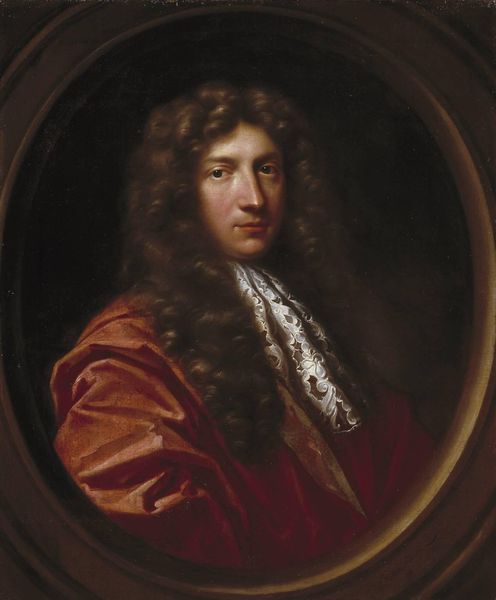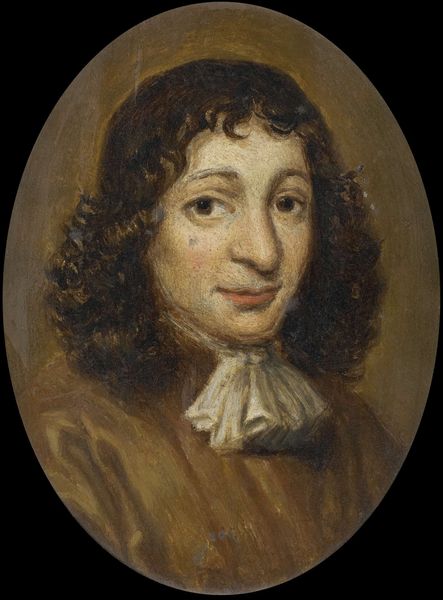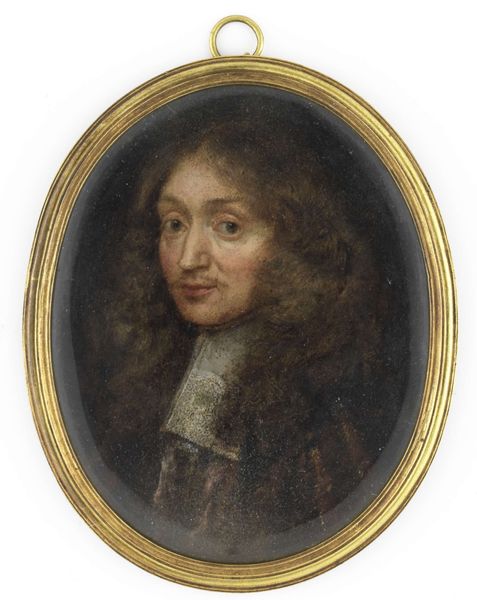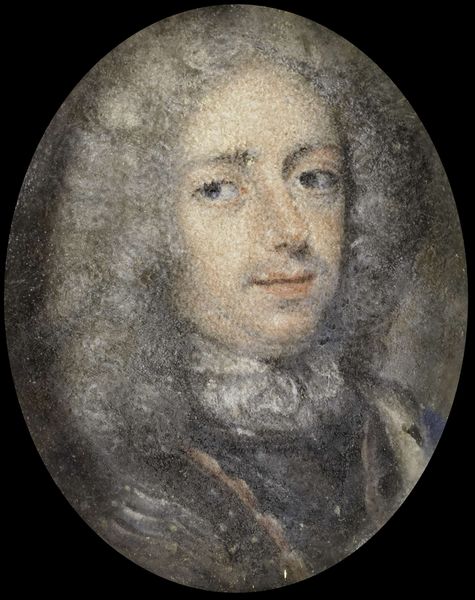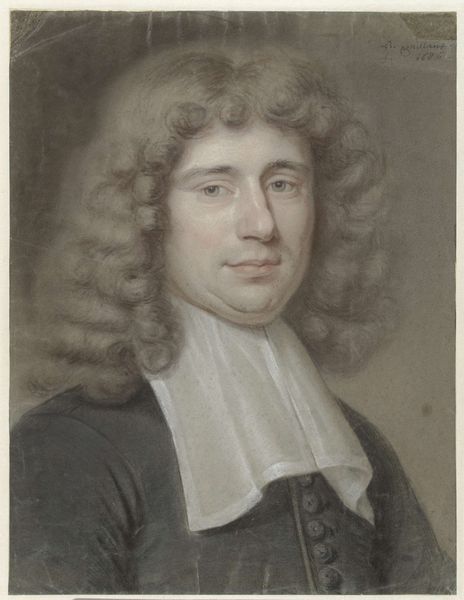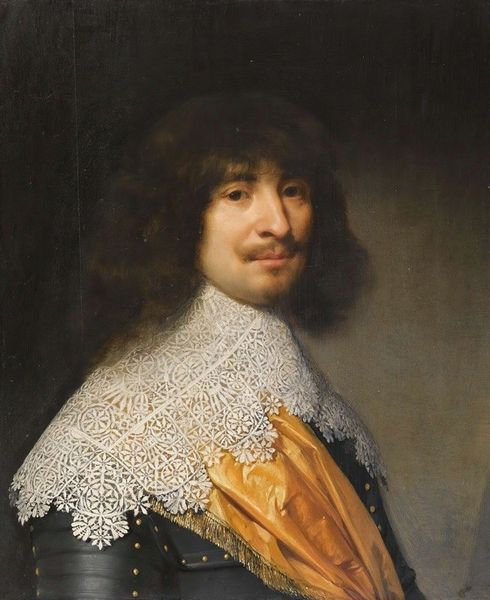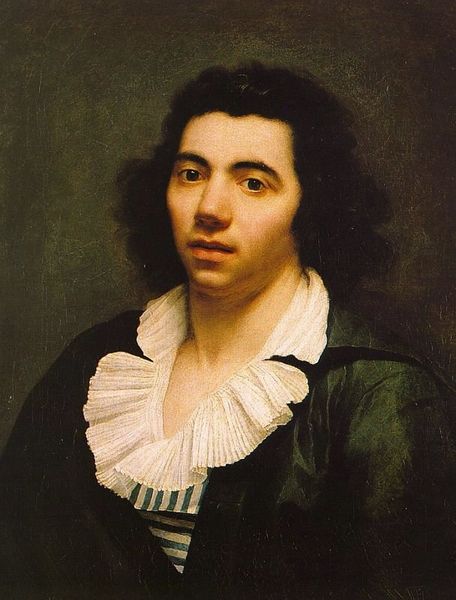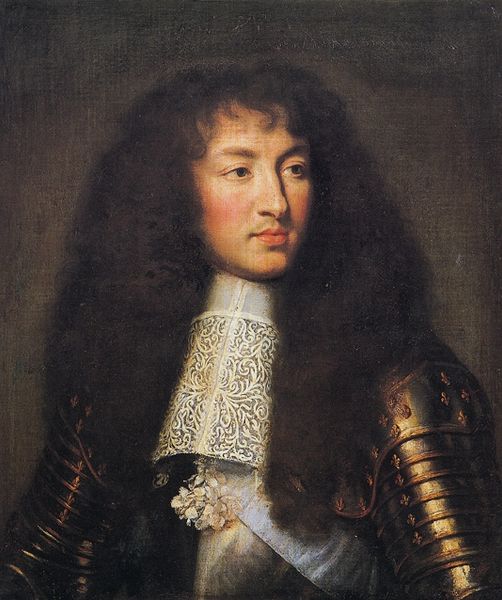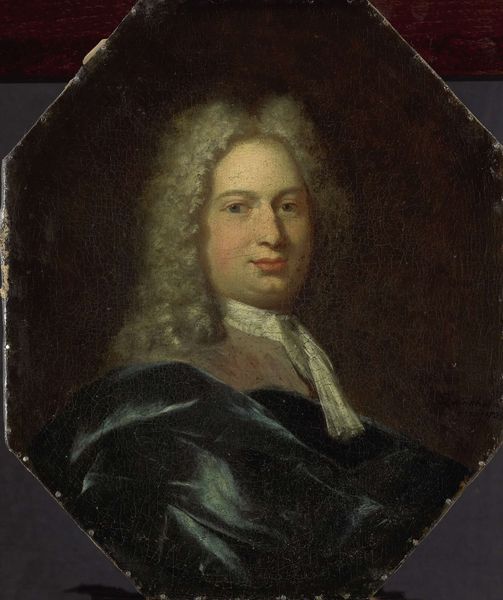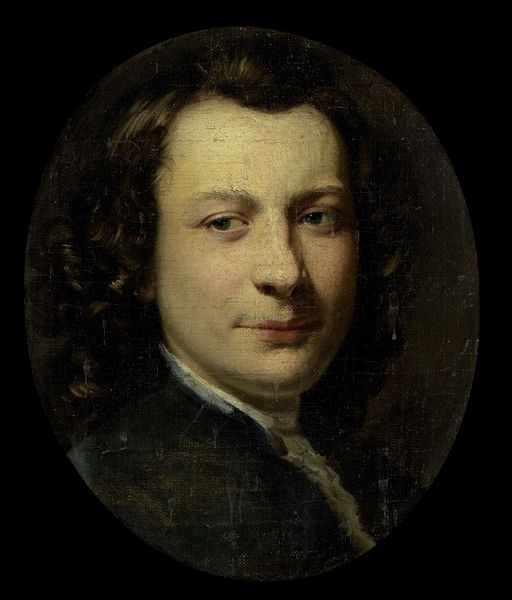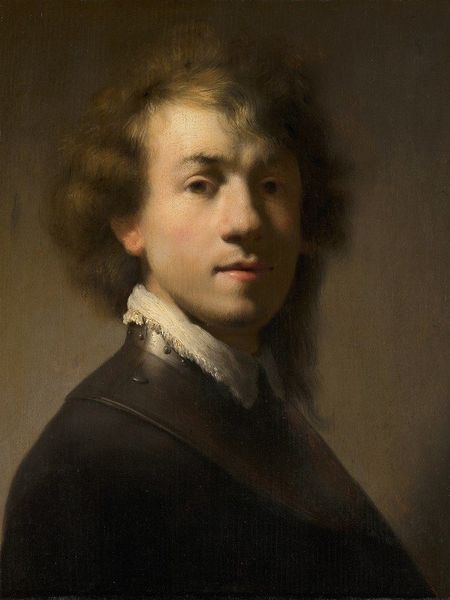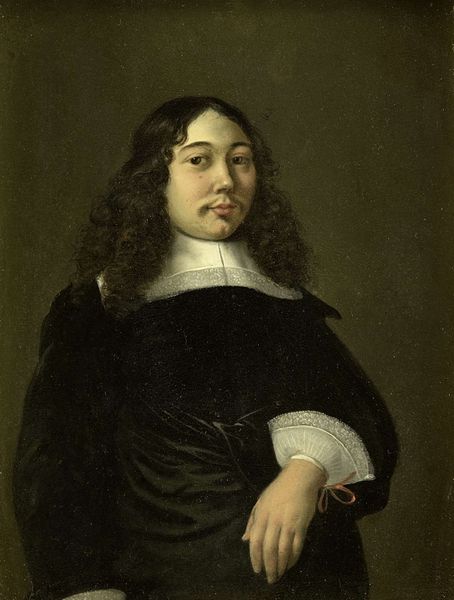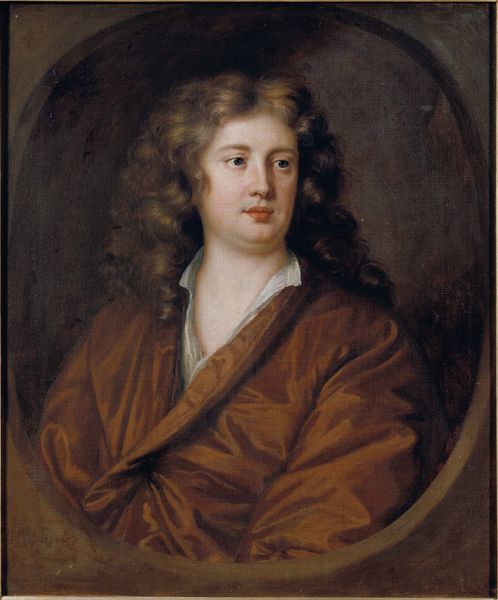
Portrait of Thedoor Netscher (1661-1728), the Artist's Oldest Son 1671 - 1684
0:00
0:00
oil-paint
#
portrait
#
baroque
#
oil-paint
#
genre-painting
Dimensions: height 47 cm, width 38.5 cm, depth 7.7 cm
Copyright: Rijks Museum: Open Domain
Curator: The Rijksmuseum holds a fascinating portrait painted between 1671 and 1684 by Caspar Netscher, titled "Portrait of Thedoor Netscher, the Artist's Oldest Son." Painted in oils, it exemplifies Dutch Baroque portraiture. Editor: He looks wistful, almost melancholic. The soft lighting on his face, combined with those heavy curls, creates an air of youthful vulnerability. Curator: It's a delicate balance, isn't it? Netscher was highly sought after for his ability to portray the elite. And we can certainly see the markings of privilege on his son here; in the fineness of the lace, the studied pose, all visual signals of wealth and status. Portraiture at the time served as powerful propaganda. Editor: Absolutely. But look at the symbols used: that elaborately tied bow, the cascading lace, even the hair—all of these speak to cultivated elegance but also restraint. I'd argue this image is projecting more than just wealth; it's a carefully constructed persona. The bow and lace almost overwhelm him and signal the superficial societal expectation on how he should appear. Curator: Netscher's technique contributes to this perception. The controlled brushwork, the almost enamel-like finish—it's polished, refined, but perhaps also slightly detached. In that regard it also serves to display Netscher's masterful skill as an artist, too. The image seems less of capturing Theo himself and capturing the likeness of an elevated boy who would become a man of status. Editor: True. It lacks a certain warmth; an openness you might find in other family portraits. What really grabs my attention is the faint uncertainty in the eyes. Curator: It raises the question of just how much agency Theo had, really, in representing himself or even in living up to the expectations bound to him through this very portrait. The subtle clues certainly suggest a complicated picture of societal expectations and constraints. Editor: A poignant example of the intersection of personal and societal portrayal through the lens of familial affection. Curator: Indeed. It's a fascinating piece that gives us access into 17th century dynastic expectations and representations.
Comments
No comments
Be the first to comment and join the conversation on the ultimate creative platform.
